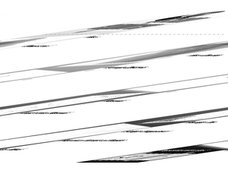CK-12 Foundation
Scuba Training
How does a scuba diver control whether they sink or float? Scholars observe the relationship between absolute pressure and depth below the surface in an undersea simulation. They control the diver size and depth to center of mass to see...
Curated OER
Ups and Downs of Diving
Students explore the science and sport of scuba diving. In this scuba diving lesson, students build Cartesian divers and observe their behavior under water pressure.
Curated OER
Scuba Diving
Students discover that scuba diving is more than a sport. It's a science that operationally integrates physics, chemistry, physiology, and oceanography. They perform a simple experiment which simulates the air tanks used in scuba diving.
Curated OER
Scuba Aruba
Young scholars interview a guest scuba diver or study electronic resources to discover facts about scuba diving. They investigate the physics of scuba diving, the gaseous components of air, equipment used, and safety precautions taken by...
Curated OER
Diving the Deep
Children research plant and animal components of marine ecosystem, visualize undersea life, and picture themselves wearing scuba-diving equipment needed to explore underwater. Students then create underwater scene in which they explore...
Curated OER
Now, Take a Deep Breath
Students define several laws of pressure and see how they relate to scuba diving. In this ocean explorer lesson students answer questions and complete an activity.
Curated OER
Outta Gas
Students explore practical problems that are related to scuba diving. In this oxygen activity students complete a lab activity.
Aquarium of the Pacific
Fish for a Day
A short video shows how a scuba divers' equipment relates to major parts of a fish. Learners draw two fish and identify what aspects are the same and which are different. The scholars then draw a scuba diver, making sure they provide all...
Cornell University
Buoyancy
Swimmers know to float by turning their bodies horizontally rather than vertically, but why does that make a difference? In an interesting lesson, scholars explore buoyancy and the properties of air and water. They test cups to see which...
Curated OER
Now Take a Deep Breath
Students research to answer questions related to deep sea diving. In this deep sea diving instructional activity, students answer questions on a worksheet using the Internet. They discuss pressure, gas laws, and the physiology of diving...
Teach Engineering
Cartesian Diver
Amaze your scholars with an activity that uses a Cartesian diver to demonstrate Pascal's Law, Archimedes' Principle, and the Ideal Gas Law. Groups then repeat the process and make their own diver move up and down in a bottle.
Curated OER
Underwater Nature Trails
Students research dive sites on an underwater nature trail that would introduce divers to the wonders of the reef surrounding South Caicos. They then recreate each dive site using shoe box diorama and create an information station at...
Curated OER
Divers's Decompression
Students are exposed to the physics and physiology of scuba diving, study the principals applied in the U.S. Navy Decompression tables and work out typical decompression problems.
Curated OER
Gardens Under the Sea: Coral Reefs
Learners, with dive partners, explore coral reefs through scuba diving. They also explore radial symmetry and bilateral symmetry.
DiscoverE
Action Figure Diver
Will your next buoyancy lab rise to the occasion? Make a splash with action figure divers! Teams of young physicists explore the relationship between mass and buoyancy by adding weights or balloons to achieve a diver that neither sinks...
Virginia Department of Education
Partial Pressure
At some point, everyone has been under pressure—even Dalton! Explore Dalton's law of partial pressures with young chemists as they measure the volume of air extracted from a sample compared to its original volume. Class members perform...
Curated OER
What In The World Are Swim Bladders and Why Are They Important
In this swim bladders worksheet, students use a bowl, water, and balloons to make swim bladders, and answer short answer questions about them. Students answer 7 questions and interview someone who has been scuba diving.
Curated OER
Coral Reefs: Gardens Under the Sea
Students discover the wonders of coral reefs while listening to a book about them. In a Reading Rainbow video activity, they simulate a dive, check equipment and explore a reef. Role-playing as marine biologists, students uncover...
Curated OER
Coral Snapshots
Using photographs and a coral reef identification key, junior marine biologists compare changes in coral cover for a No-Take Area and the surrounding unprotected area. The data that is collected is then analyzed for richness,...
Curated OER
Descending to the Challenge: Developing Documentaries About the Deep Ocean
The video clip that comprises the warm up is not available, but the related article from The New York Times and the movie trailer for Aliens of the Deep are, leaving enough material to make this a fascinating instructional activity on...
Curated OER
Lake Strata and Internal Waves
Use the classic density demonstration of placing a cola, a clear soda, and a diet soda into a tank of water. Then let learners attempt to pour some of the soda into layers in a clear container. The procedure explains a thermocline, and...
Curated OER
Water Pressure in the Ocean
Students compare the pressure of water at different depths and gain an understanding of how increased water might affect animals living in deeper waters. They participate in an experiment to show that depth, not volume, affects water...
Curated OER
Depth Line
Students use adding machine tape to plot increasing ocean depths and deep sea historical events.
Curated OER
Habitats and Adaptations
Students research and describe the habitat and adaptations of a reef animal. After the student is assigned a habitat, they design and draw a cresture adapted to eat each food and to live in each habitat.
Other popular searches
- Scuba Diving Experiments
- Scuba Diving Respiration
- Scuba Diving Lungs
- Scuba Diving Worksheets
- Scuba Diving in Belize

























